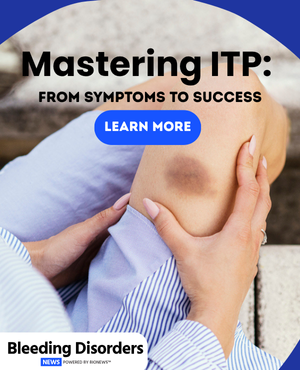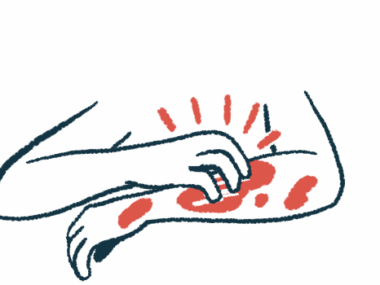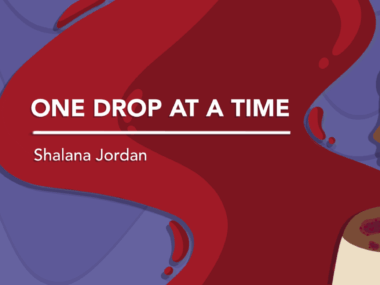Taking prednisone for ITP can be both a godsend and a curse
I have a love-hate relationship with the steroid medication
Written by |

Note: This column describes the author’s own experiences with prednisone. Not everyone will have the same response to treatment. Consult your doctor before starting or stopping a therapy.
I wiggled my toes out of the way as I looked down at the scale. Frustration washed over me: I’d gained another 4 pounds. Despite eating in a calorie deficit, drinking less soda, and going to the gym an extra day each week, I’d still gained weight. I was so upset I could feel heat rising in my chest and neck and slowly flooding my cheeks. I looked in the mirror and saw my cheeks were, indeed, flushed and bright red. I hated taking prednisone.
In 2018, I made several life changes. My divorce the year before had wrecked my self-esteem, and my physical fitness took a back seat to running a large business and being a single mom. So in the summer of 2018, I finally made myself a priority. I got a gym membership, stopped snacking on the kids’ snacks, and quit eating late at night. And it was working — I lost 60 pounds in four months.
But this progress came to a screeching halt when I started feeling unwell in September. I was exhausted no matter how much I slept, I had bruises all over, and I experienced frequent nosebleeds. My periods became irregular, but I assumed it was from the rapid weight loss.
But after having blood work done at my gynecologist’s office and attending an urgent appointment at the Medical University of South Carolina, I was diagnosed with immune thrombocytopenia (ITP). This rare disease causes the immune system to attack platelets, which help the blood to clot. That was exacerbating the effects of the anemia I already had and was wreaking havoc on my body.
I also have lupus, so it was important to get the ITP under control because of my increased risk of complications. After a few blood transfusions, I was already feeling a little better. But to stop my immune system from attacking my platelets, doctors prescribed me prednisone.
Prednisone is a corticosteroid that suppresses the immune system. I’d taken it several times before for lupus flares and both loved and hated it.
Benefits and side effects
Prednisone helps me in several ways. First and foremost, it stops my body from trying to destroy itself, and it works very quickly. I usually feel a difference after only two days. It also gives me energy. ITP resulted in a level of fatigue and exhaustion I’d never experienced before, so when doctors said I needed to take a round of prednisone, I was actually a little excited, because I knew I’d feel so much better.
The medication also affects my bipolar disorder. I was so tired from ITP that I felt myself slipping into depression. Prednisone can cause mood changes, often pushing me into a manic state — or, as I call it, an “upswing.” The manic side of bipolar can cause many people to behave in destructive ways, but for me, it’s the opposite: My depressive states are destructive, but during an upswing I’m creative, motivated, and productive. So I knew that, after starting on prednisone, I’d have a few weeks of creativity ahead.
However, steroids also have a dark side. I have less patience and get frustrated more easily when I’m taking them, making me quick to snap at my children. I can also become paranoid, which affects my social interactions.
But one of the worst side effects for me was weight gain. I’d just busted my butt to lose 60 pounds. For me, a week or two of steroids can cause me to gain as much as 10 pounds. That may not seem like much, but on my small, 5-foot frame, 10 pounds is very noticeable. And prednisone weight gain always shows in my face and stomach first. The morning I decided to weigh myself, I’d seen in the mirror how much rounder my face was and knew instantly that I’d gained weight.
It’s so frustrating! And no weight loss tricks work for me when I’m on steroids. I just have to wait until I’m done with the medication. And with ITP, it was important for me to complete the entire round of prednisone: two weeks’ worth, plus steroid shots upon diagnosis.
For me, prednisone is both a godsend and a curse. It’s wild that a tiny, bitter-tasting pill can have so many effects — and even wilder that it can stop immune system attacks in their tracks! I still need rounds of prednisone every four to six weeks. With five different autoimmune diseases, it’s the easiest way to get my system back on track.
What are your experiences on prednisone? Please let me know in the comments below.
Note: Bleeding Disorders News is strictly a news and information website about the syndrome. It does not provide medical advice, diagnosis, or treatment. This content is not intended to be a substitute for professional medical advice, diagnosis, or treatment. Always seek the advice of your physician or other qualified health provider with any questions you may have regarding a medical condition. Never disregard professional medical advice or delay in seeking it because of something you have read on this website. The opinions expressed in this column are not those of Bleeding Disorders News or its parent company, Bionews, and are intended to spark discussion about issues pertaining to bleeding disorders.







